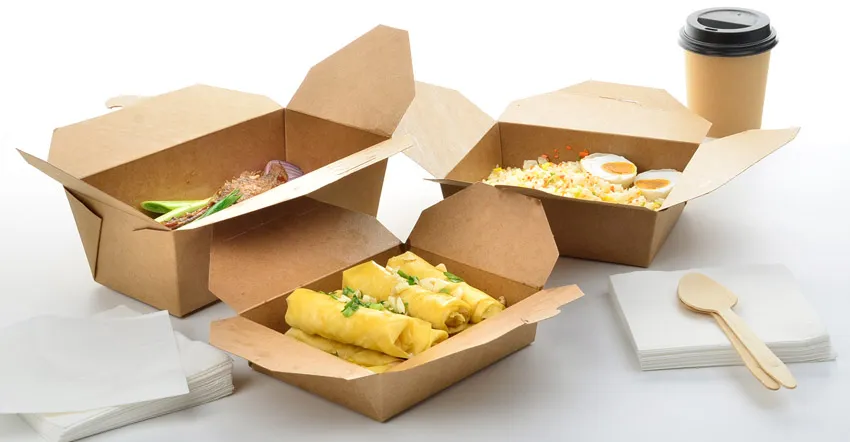Sustainable food packaging made from cardboard and paper plays a significant role in helping UK food businesses comply with national food safety regulations while aligning with environmental standards. These materials are widely used across the industry for their eco-friendly properties, their ability to maintain hygiene and reduce contamination risk, and their support of traceability.
According to UK legislation, including the Food Safety Act 1990 and the Food Contact Materials (England) Regulations 2012, all packaging that comes into contact with food must be safe and non-toxic, and fit for its intended purpose. Packaging made from paper or cardboard that is designed for direct food contact is manufactured under strict controls and is often treated with food-safe coatings that act as barriers to moisture, grease, and contaminants. These coatings enable paper-based packaging to preserve the integrity of food, particularly bakery items, ready meals, and dry goods.
Sustainable variants, such as compostable paper trays or restaurant packaging box in UK lined with biodegradable films, adhere to the same food-grade standards as their conventional counterparts. When sourced from certified suppliers, these materials meet EU and UK food safety criteria regarding chemical migration and hygienic production. This ensures that recyclable or compostable paper packaging does not compromise consumer health.
Another key aspect of food safety is tamper evident packaging and hygiene. Paper and cardboard can easily be sealed, folded or glued to create packaging that clearly shows if it has been opened. This prevents tampering and assures consumers of product integrity. Packaging formats such as sealed cardboard sleeves for sandwiches or paper wraps with tamper-indicating labels comply with the Food Standards Agency’s (FSA) food hygiene guidelines.
Traceability is also essential for regulatory compliance. Printed information on paper packaging, such as use-by dates, batch numbers, allergen warnings and supplier details, is crucial for product recalls and food safety audits. Cardboard boxes and paper labels provide ideal surfaces for clear and legible printing, making them effective tools for meeting regulatory traceability requirements.
Additionally, paper and cardboard packaging facilitate food separation and prevent cross-contamination. Compartments and dividers in cardboard boxes can isolate food items, which is useful for products such as meal kits and catering supplies, or for transporting food. These physical barriers help to maintain cleanliness and compliance during handling and distribution.
